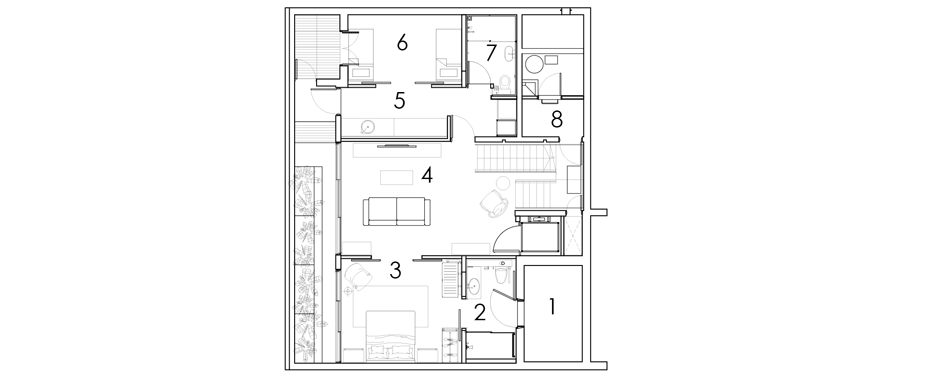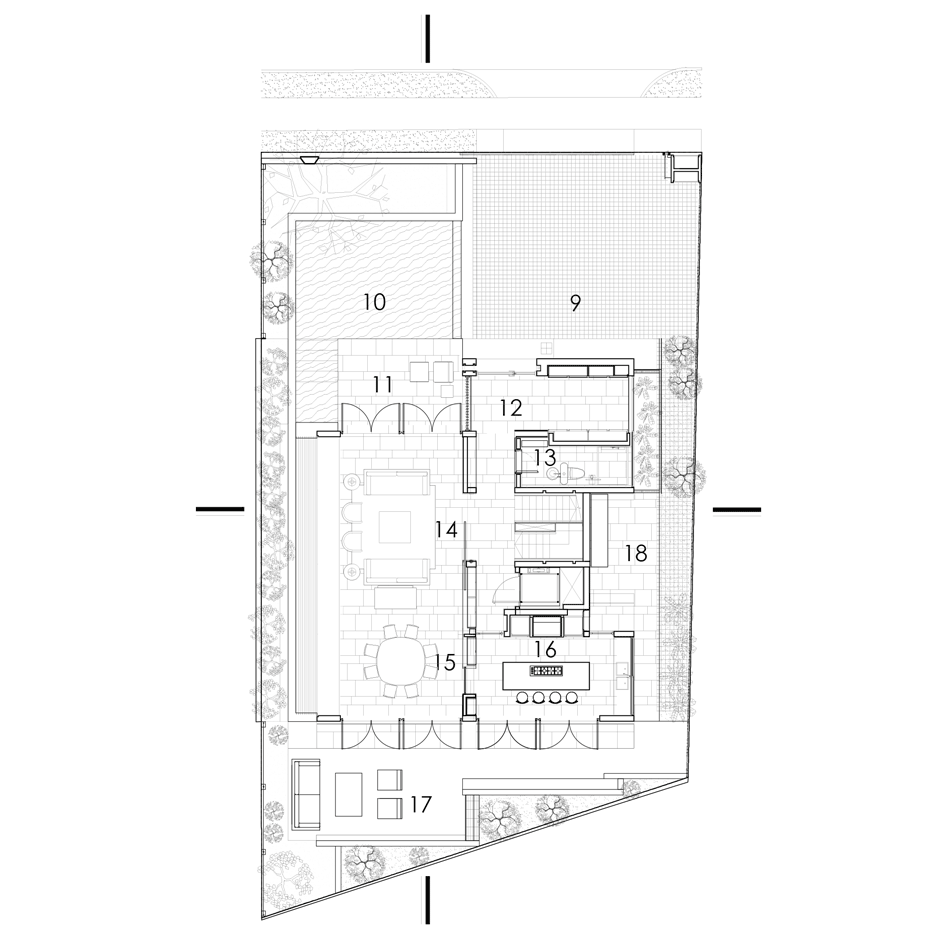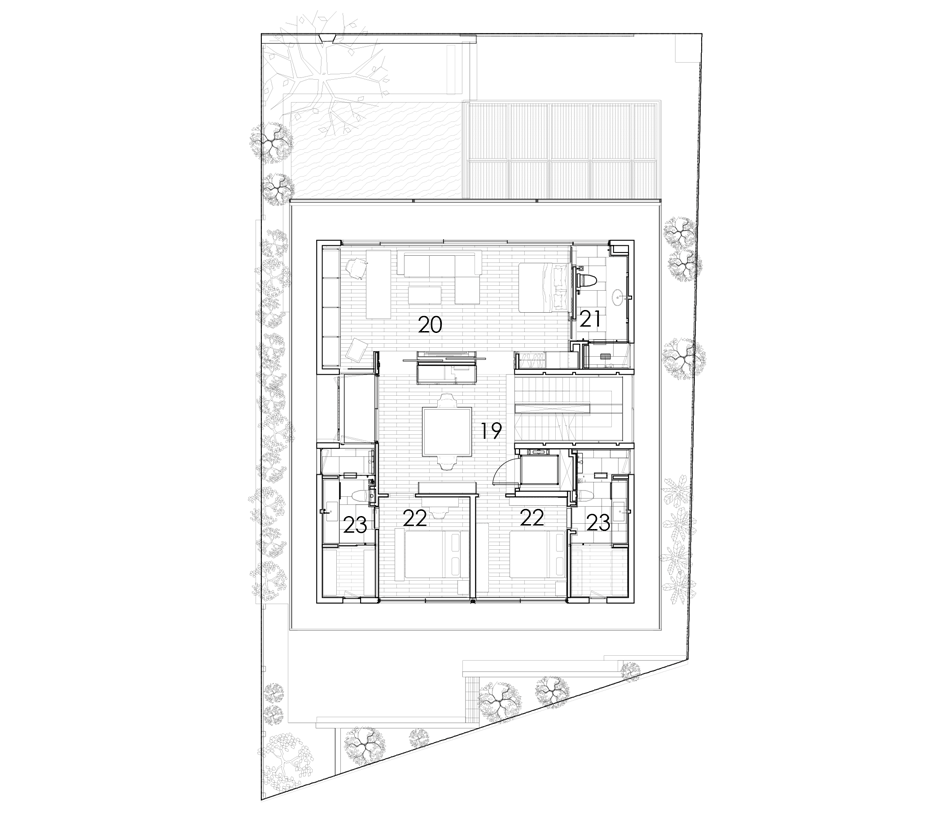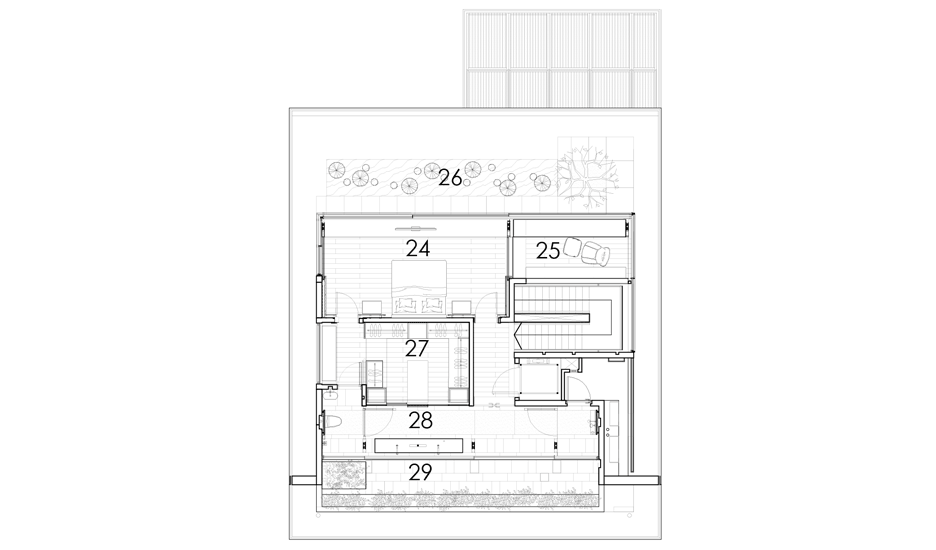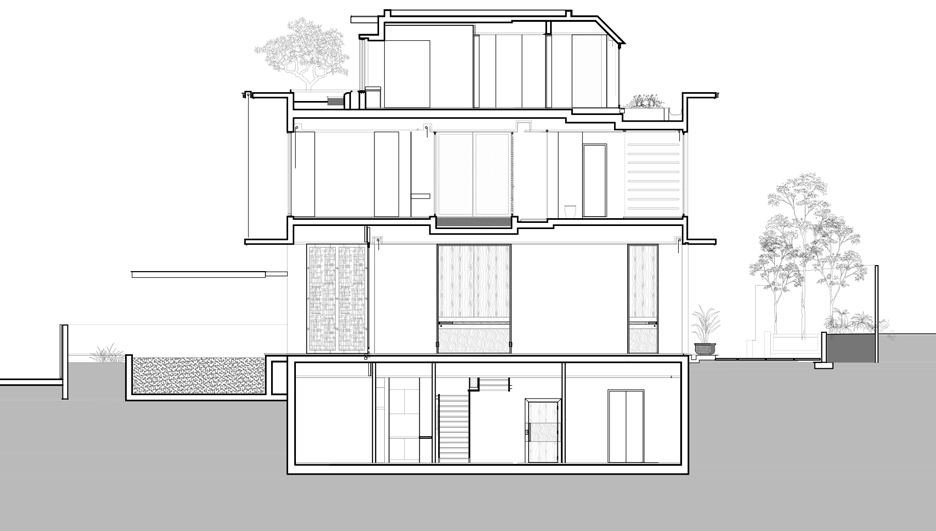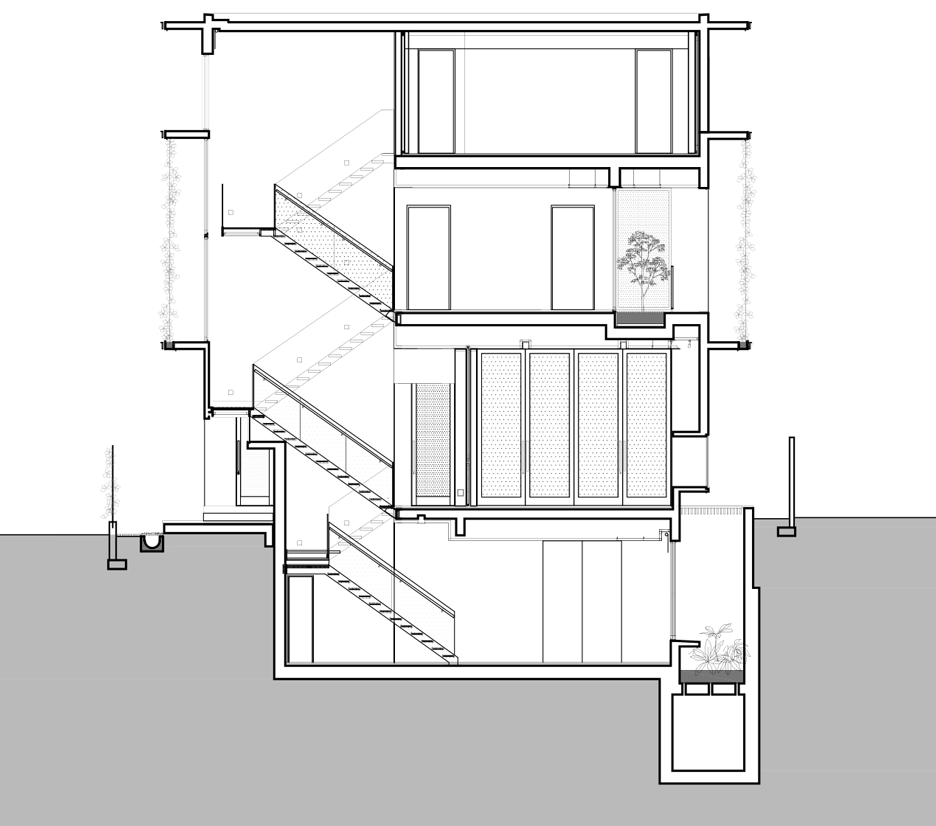Chiltern House by WOW Architects features a rooftop lily pond to attract birds
Plants and ponds are incorporated into the roof, walls and terraces of this concrete house in Singapore to make it feel like it is "enveloped by a garden" (+ movie).
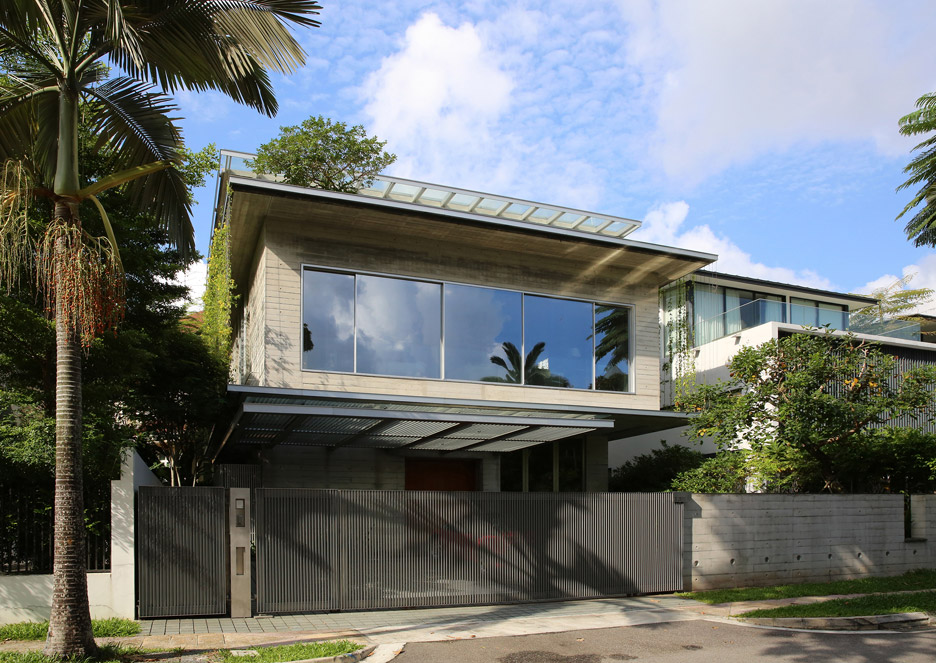
Chiltern House was designed by Maria Warner Wong, design director of WOW Architects in Singapore, for herself, her husband, and their two sons, aged 18 and 22. It occupies a 400-square-metre site that was once the garden of a larger house.
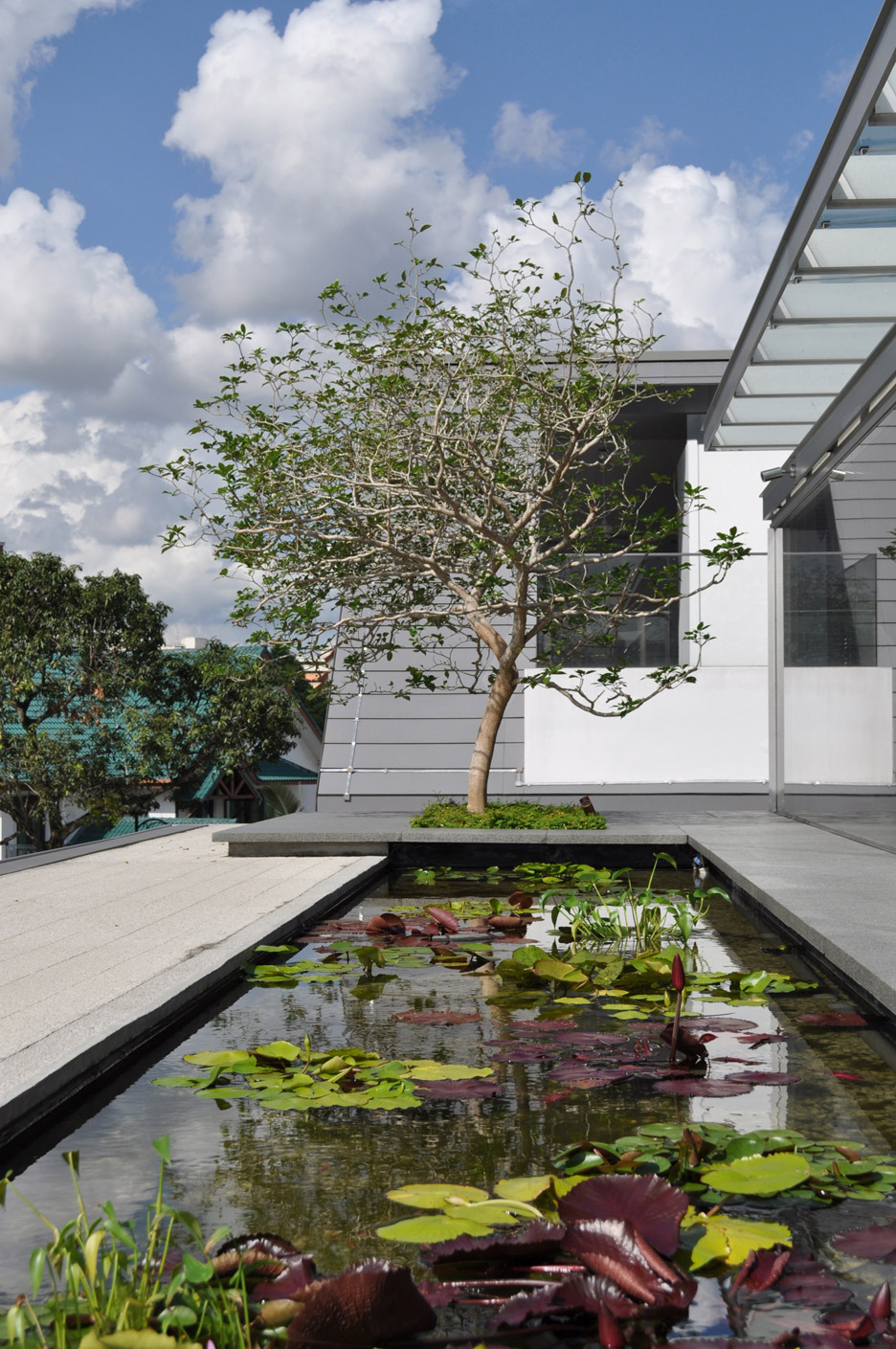
To replace the lost green area of the previous home's garden, Warner Wong incorporated a range of plants and water features around the house.
These include cables with climbing plants at the sides, which act like curtains to provide privacy and shade. There is also a lily pond on the roof outside the master bedroom, which attracts a range of birds and offers reflections of the sky.
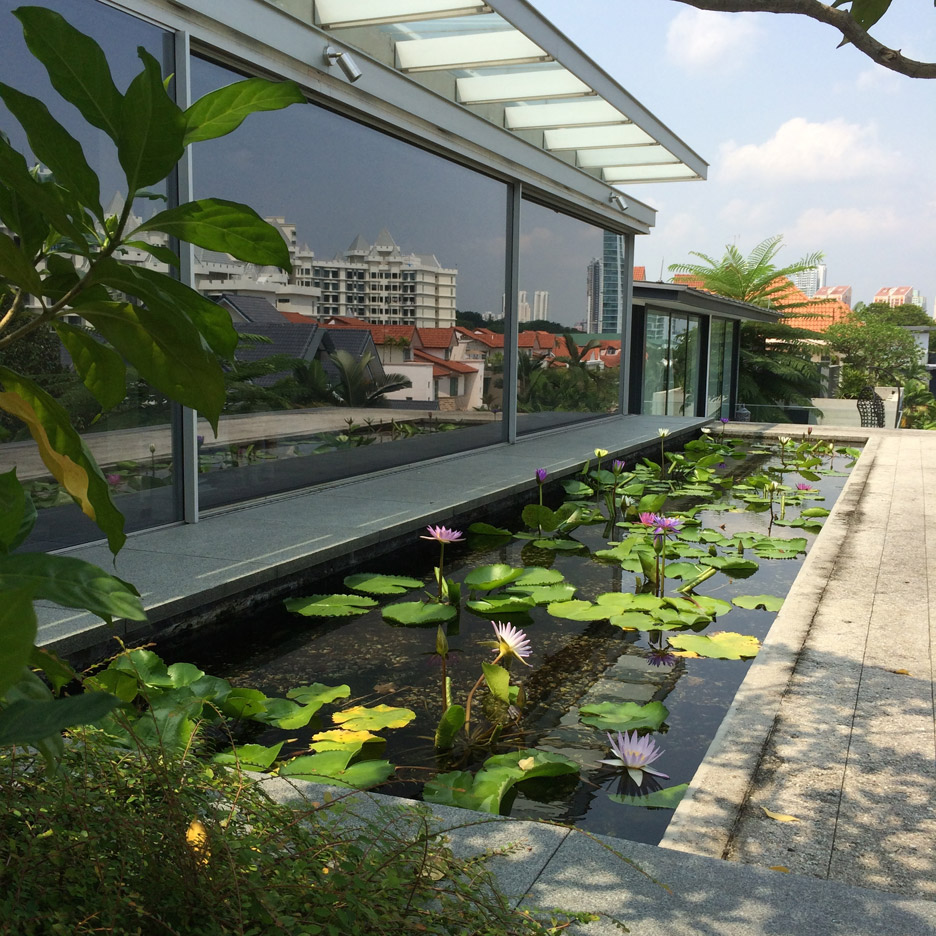
"Our desire was for a home enveloped by a garden," Warner Wong told Dezeen. "At the core of our mission is a belief that connecting with the environment is the key to wellness in a fast-paced urban life."
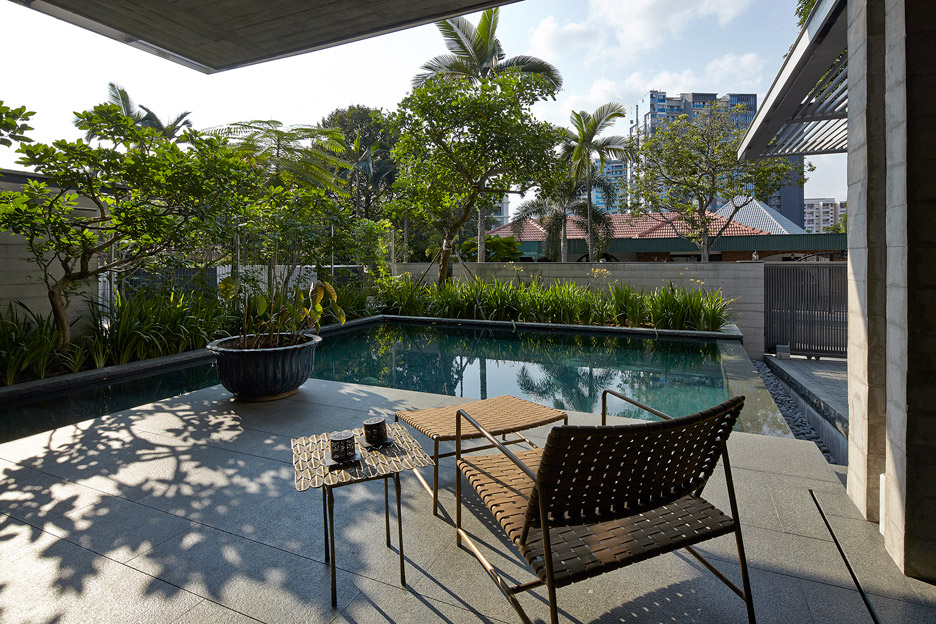
"As we look out the window of our home, we are surrounded by thousands of apartments with balconies used for drying laundry," she continued.
"We thought, what if we instead incorporate a cable vine system that welcomes sunbirds and bumble bees, and shrouds the concrete jungle in a web of vines? How will that impact our collective perception of the environment?"
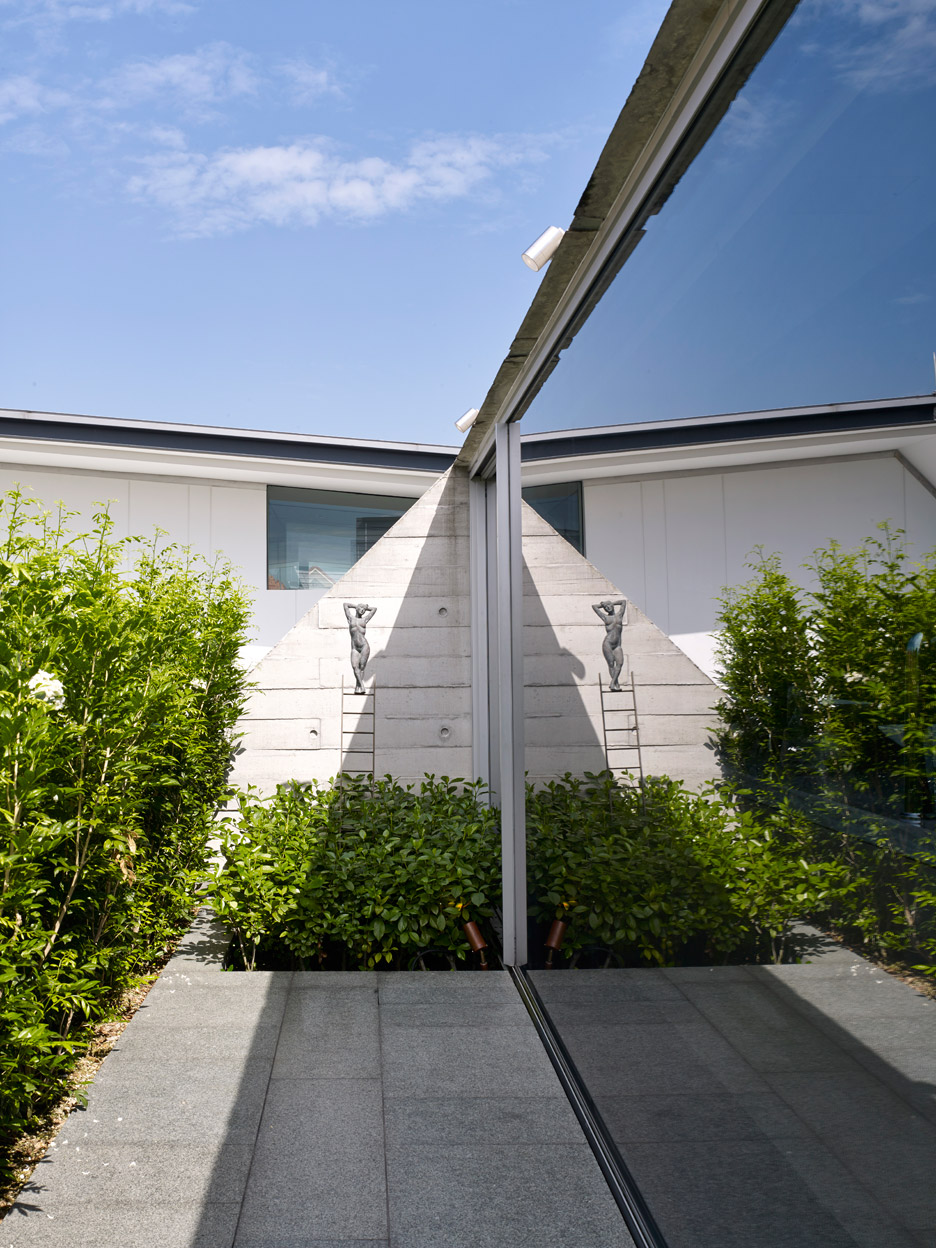
Warner Wong built the house with concrete because it requires no exterior finish. She believes it offers a truer reflection of the location than other materials.
"Concrete is unique to its place in a way we often overlook. Though most construction materials might be imported from anywhere in the world, the sand that is added to cement to make the concrete is almost always local," she explained.
"In Singapore, our sand is a yellowish ochre colour and it gives the concrete a unique tone."
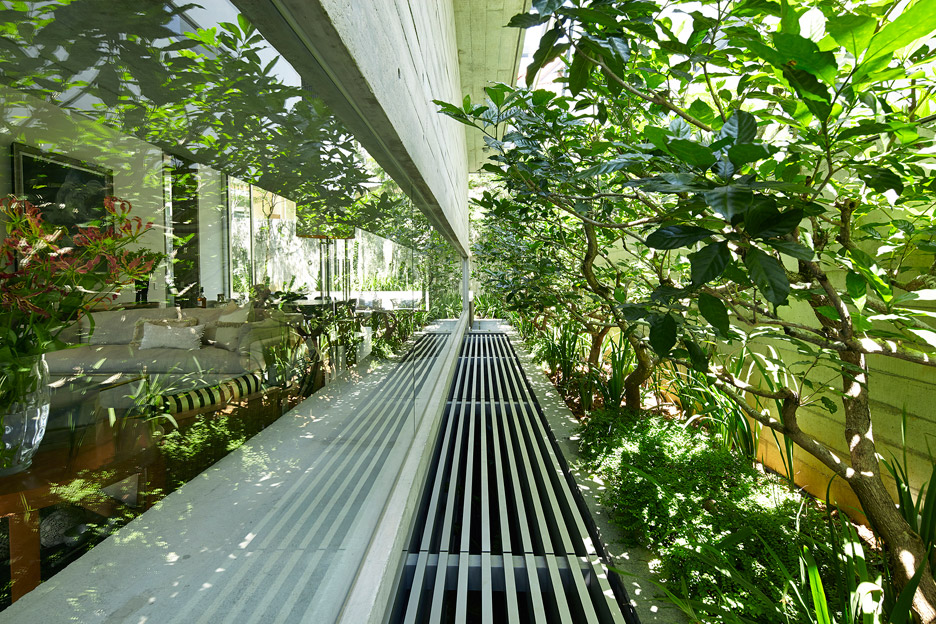
The concrete was mixed with a waterproofing compound to prevent it from ageing and darkening in Singapore's rainy, humid climate, and was cast on-site with timber formwork.
The formwork has left an imprint of the wood's rough texture on the surface of the concrete, intended to create a memory of the construction process.
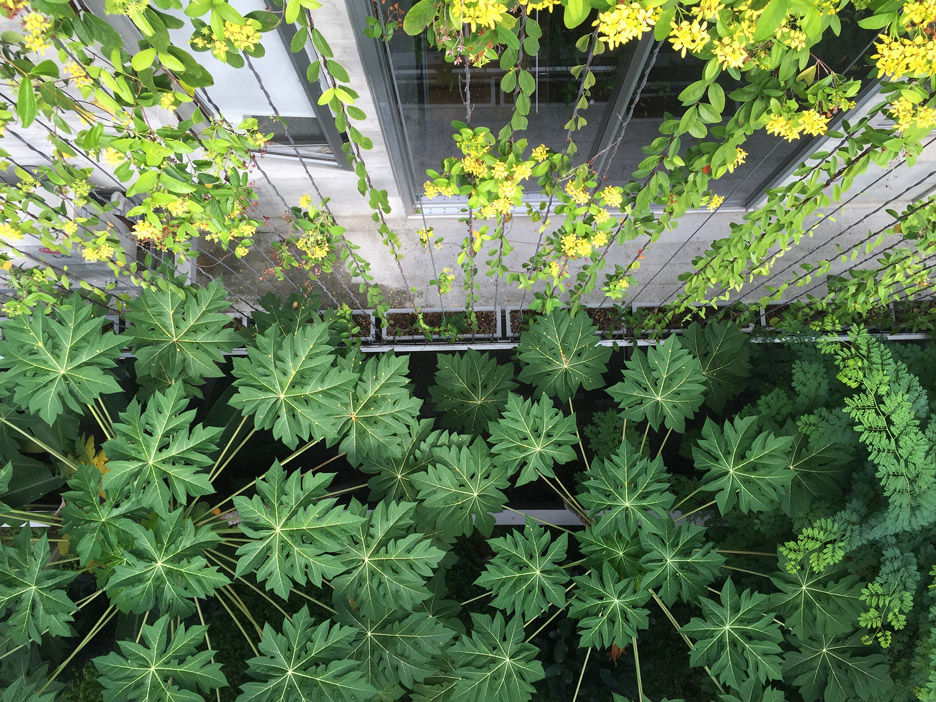
"For our family, building this home fulfilled a deep longing for a place of our own, and we all participated in its creation," said Warner Wong.
"The memory of the construction process marks the passing of time and reminds us of the effort, desire and realisation of this dream."
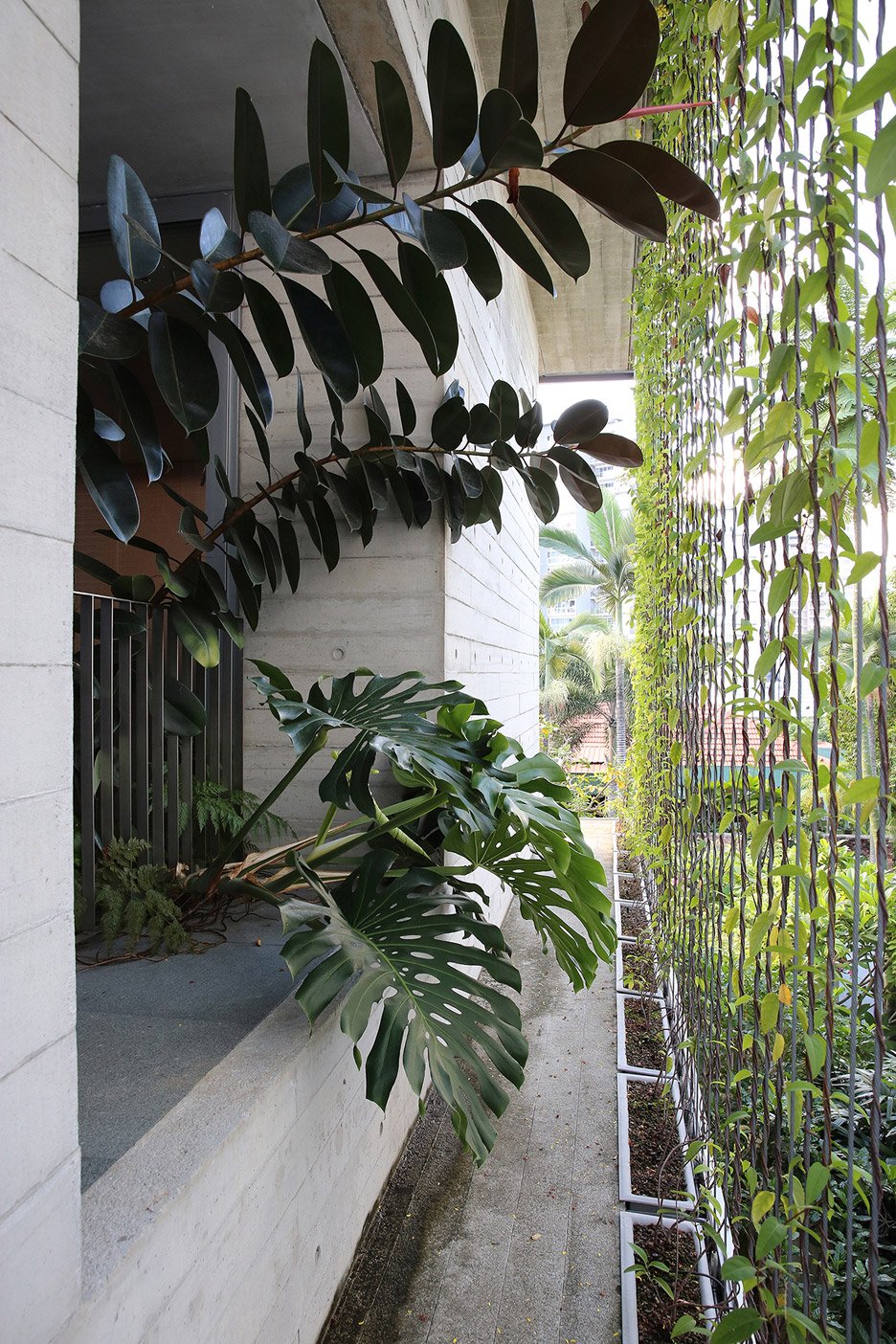
Other homes that use their construction materials to create interesting textures and patterns include a Belgian house covered in a mixture of hemp, lime and water to give it a streaky rock-like surface, and a Mexican house built with layers of rammed earth, which have been pigmented to create a stratified pattern.
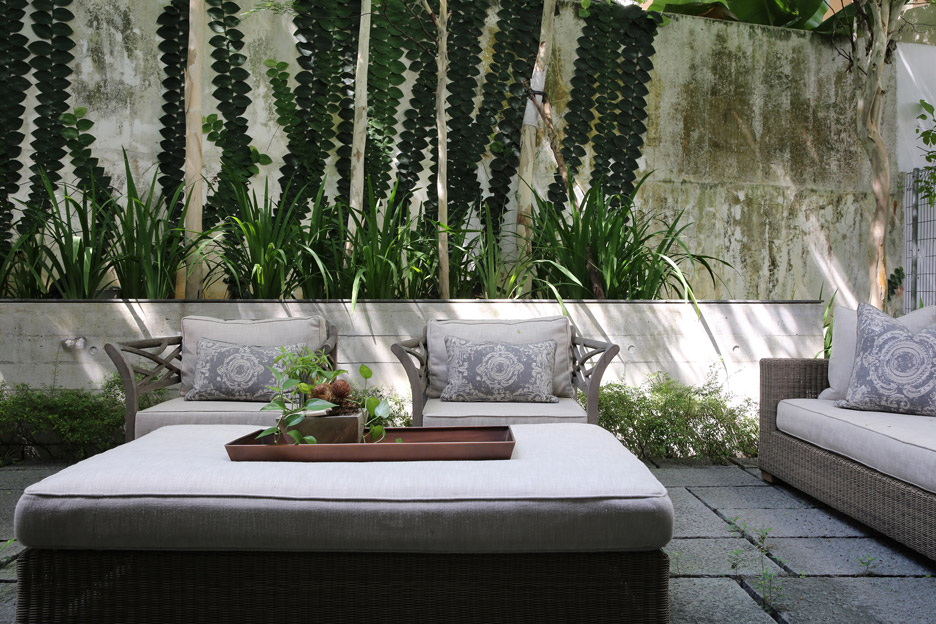
Chiltern House has four storeys, with a guest room in the basement; a kitchen, living room and dining room on the ground floor; a study and two bedrooms on the first floor; and master bedroom suite on the top floor.
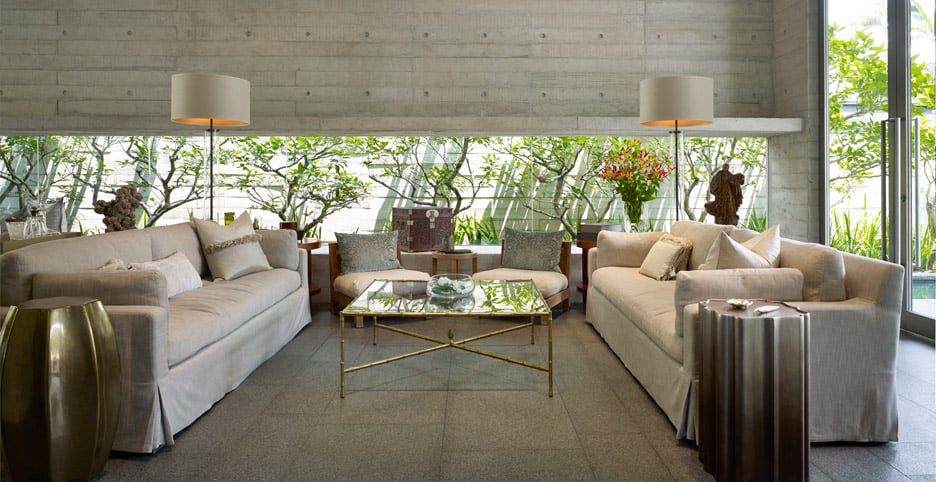
The rooms open up to each other to allow for clear views through the home, and long windows stretch across the length and breadth of the house to create views to the garden and city beyond.
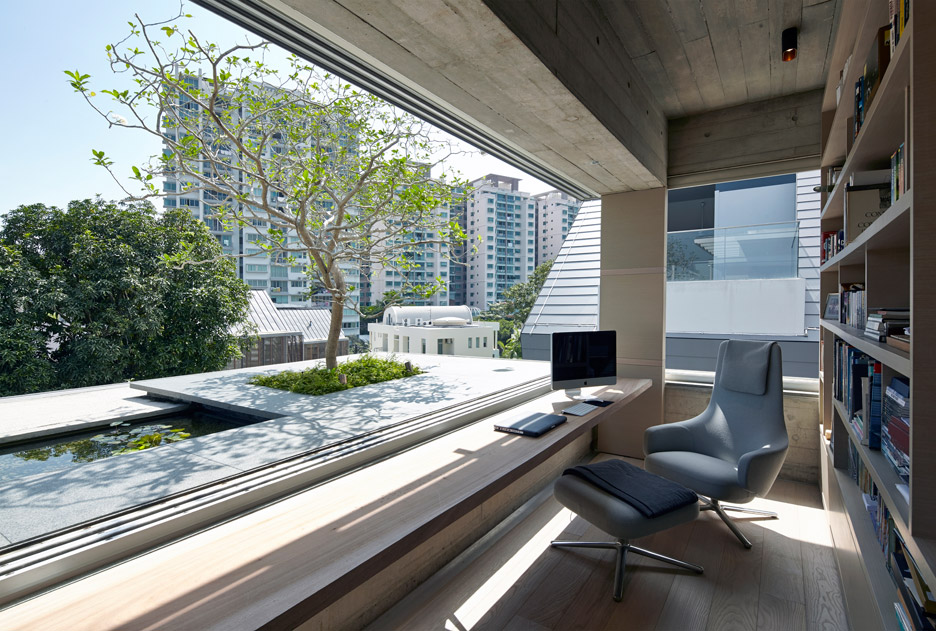
"There is a complex interplay of large and deep spaces, and connections that stretch across the length of the house in various directions," said Warner Wong.
"These visual connections within the rooms, as well as from space to space, help to unite us as a family and make us aware of each other's movements within the house, and strongly link the house to its surrounding environment."
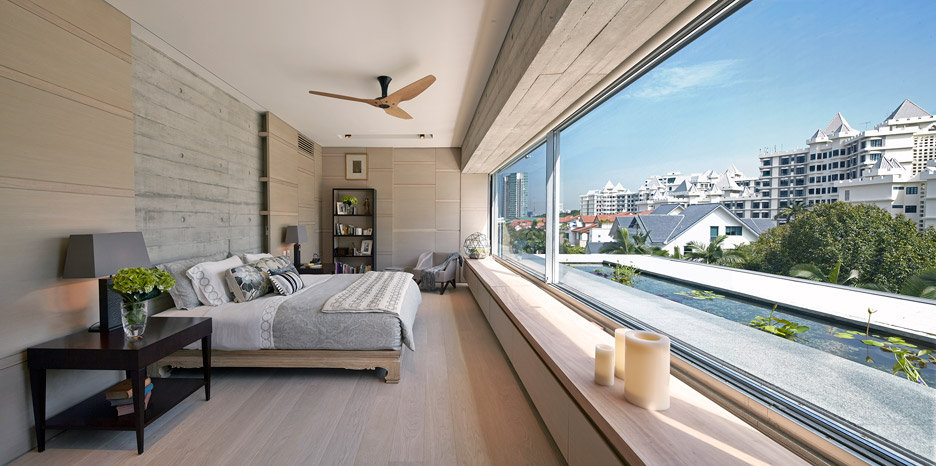
WOW Architects designed the planting scheme with landscape designer Eliam Eng from the Nyee Phoe Flower Garden. Eng was involved from the very beginning of the project, to ensure drainage and irrigation were properly integrated.
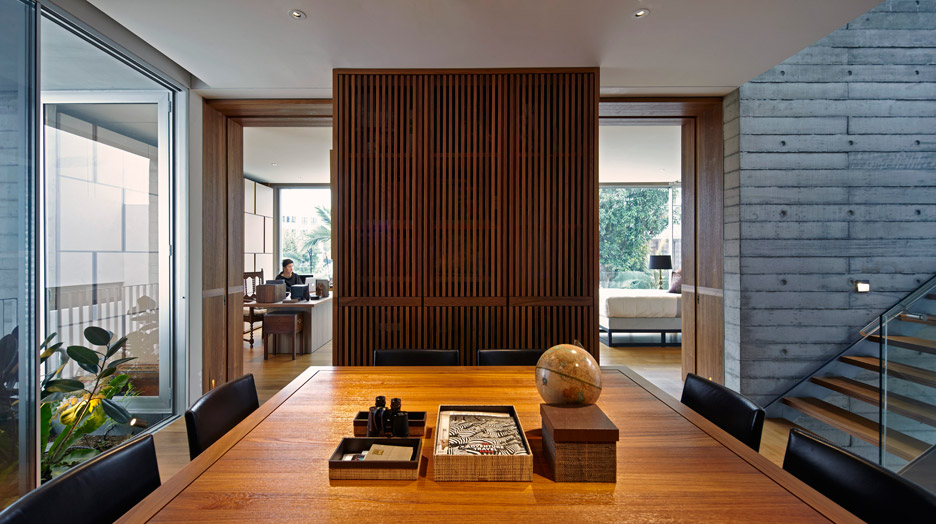
The aim of the landscape design was to create direct connections with nature, and a sense of separation from the city.
The kitchen terrace at the rear has an edible garden to encourage a tree-to-table food chain; the pool outside the living room provides a buffer zone between the house and the street; and leopard trees around the ground floor were chosen for their tiny leaves that flutter in the wind, providing a visual barometer of the breeze.
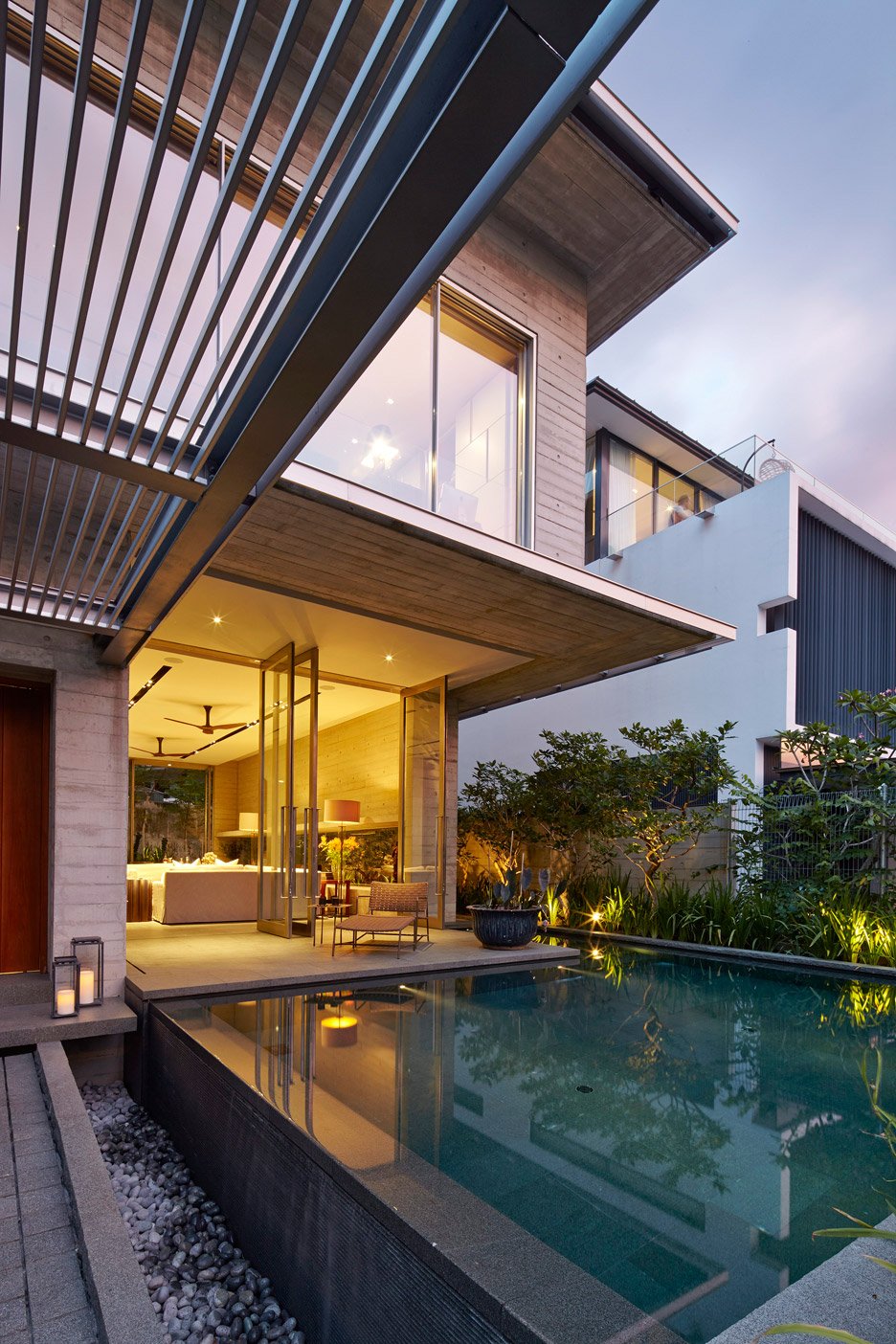
"We have choreographed opportunities to marvel at the miracle of nature," said Warner Wong.
"In the bathroom, we can stand in front of a full-height window and observe butterflies around the jasmine flowers, and in the master bedroom, we can open the blinds in the morning to see a family of herons fishing in the lily pond."

To create a sense of continuity inside the home, Chinese granite was used for all floor surfaces on the ground floor, including the interior tiles, the paving for the terraces and the pool, and the cobblestones of the driveway.

Wire-brushed cypress veneer was chosen for wall panels on the ground floor to match the tone and texture of the exposed concrete, and teak provides the flooring on the first floor.
Photography is by Aaron Pocock.
